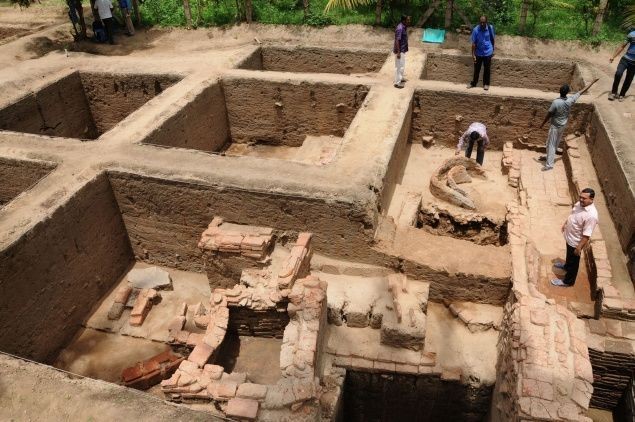PREVIOUS
Keezhadi Archeological Site, Sivagangai
September 20 , 2019
2044 days
3997
0
- The Tamil Nadu Archaeology Department (TNAD) has stated that the cultural deposits unearthed during excavations at Keeladi in Sivaganga district, could be dated to a period between 6th century BCE and 1st century CE.
- A report titled, ‘Keeladi-An Urban Settlement of Sangam Age on the Banks of River Vaigai’ has been published by the TNAD.
- The new findings in the report placed the Keeladi artefacts about 300 years earlier than previously believed.
- First three excavations were carried out by the Archaeological Survey of India, and the fourth excavation was undertaken by the TNAD.
- The results suggested that the second urbanisation of the Vaigai plains happened in Tamil Nadu around 6th century BCE as it happened in the Gangetic plains.
- The report now spels the site as “Keeladi” as against the erstwhile widely used Keezhadi.
- This is a major turning point in the cultural historiography of the ancient Sangam Age.

Tamil Brahmi Script
- Fifty-six Tamil-Brahmi inscribed potsherds were recovered from the site of excavation.
- Keeladi findings fix the date of Tamil-Brahmi script at 6th century BCE.
- It establishes that local people have attained literacy or learned the art of writing as early as 6th century BCE.
Animals
- The Skeletal fragments of following animals found at the site were sent to Deccan College Post Graduate and Research Institute in Pune for analysis of their age.
- cow/ox, buffalo, sheep, goat, nilgai, blackbuck, wild boar and peacock.
- The society in Keeladi had used animals predominantly for agricultural purposes.
Carbon Dating
- Six carbon samples collected from site were sent to Beta Analytic Lab, Miami, Florida, U.S., for Accelerator Mass Spectrometry (AMS) dating.
- One of the six samples collected at the depth of 353 cm and sent for carbon dating test in the U.S. “goes back to 580 BCE”.
- Pottery specimens from Keeladi sent to the Earth Science Department of Pisa University, Italy, through Vellore Institute of Technology.
Leave a Reply
Your Comment is awaiting moderation.


